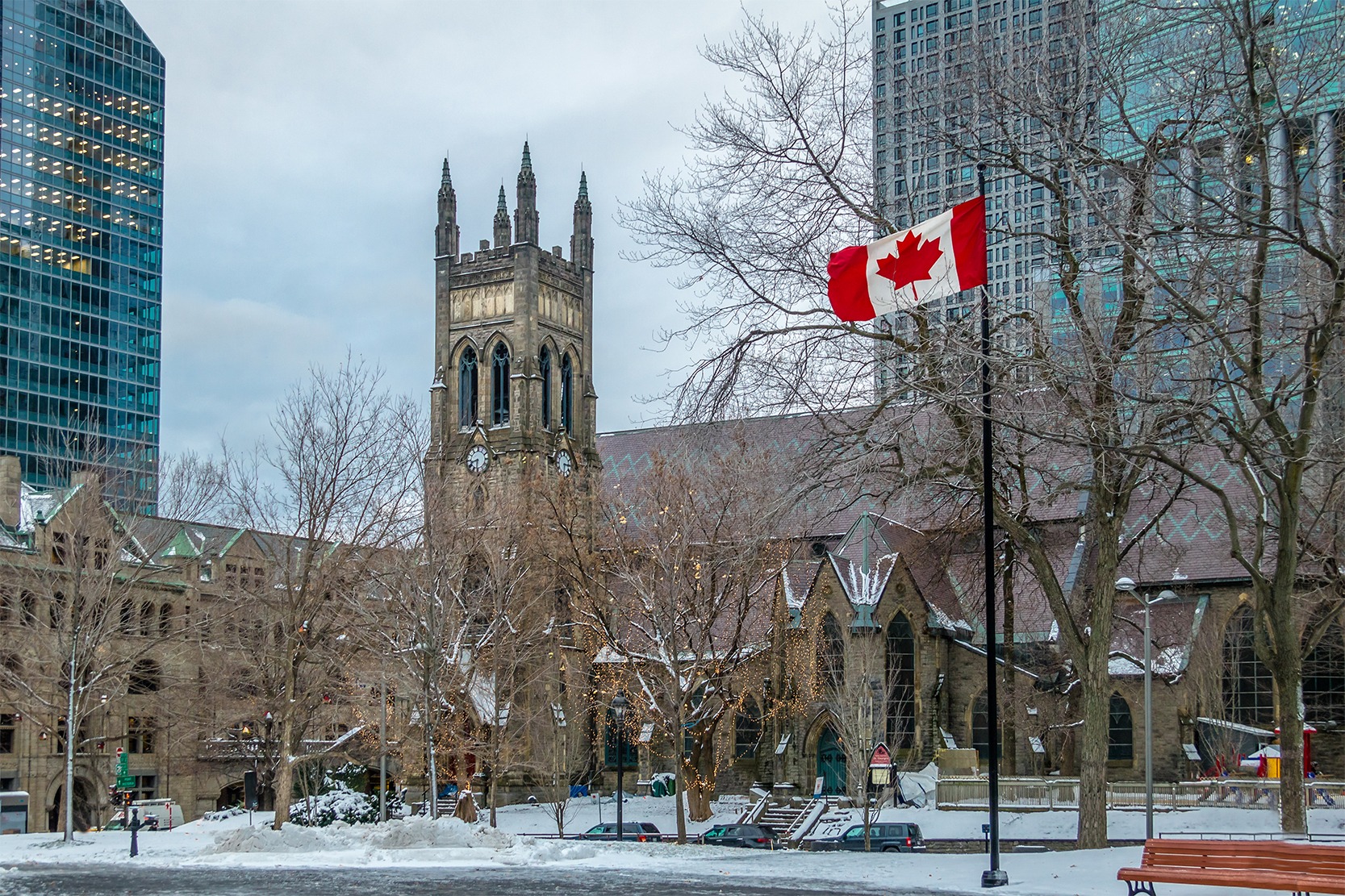It is estimated that there are 1.8 million people in Canada’s immigration backlog.

The rate at which the IRCC processes FSWP applications has increased. In the last few months, there have been improvements in the permanent resident, study permit, and citizenship inventories.
However, there are signs of improvement in immigration, study permit, and citizenship applications; the IRCC’s inventory stands at 1.8 million people as of February 1, 2022.
The media requested the most recent inventory data from Immigration, Refugees, and Citizenship Canada (IRCC). It comprises applications from future citizens, permanent residents, international students, and temporary workers.
A total of 1,815,628 people are awaiting decisions when these categories are added together. In December, there were 1,813,144 people on the waiting list. The discrepancy translates to a 0.1% increase in the backlog during the last 48 days or 2,484 additional applicants.
There is a noticeable slowdown in the rise of the backlog between October and December. IRCC reported a backlog of 1,791,936 in October. According to the Toronto Star, the number was 1,448,000 before this.
The number of people currently awaiting IRCC processing is shown in the table below.
The February data given by IRCC is being reported by Woodhaven precisely. According to the updated data provided by IRCC, the inventory of IRCC’s economic, family, refugee, and humanitarian class programs is not broken down under every single one of these programs.
Since October, more than 29,000 people have been taken off the waitlist for permanent residence.
Since October, there have been a total of 29,165 fewer applications for permanent residency.
More than 25,000 people have been removed from the backlog in the economic class, and over 9,200 people have been removed from the backlog in the family class.
| Immigration category | Persons as of February 1 | Persons as of December 15 | Difference (December 15 – February 1) |
| Economic Class | 230,573 | 234,770 | -4,197 |
| Family Class | 102,222 | 105,298 | -3,076 |
| Humanitarian and Compassionate/Public Policy | 27,436 | 27,520 | -84 |
| Permit Holders Class | 21 | 24 | -3 |
| Protected Persons | 158,778 | 157,658 | +1,120 |
| Grand total | 519,030 | 525,270 | -6,240 |
IRCC is currently processing a typical of 800 FSWP applications per week, compared with the earlier average of 150 per week
More Federal Skilled Worker Program (FSWP) applications are processed by IRCC each day.
As of early December, an average of 600 applications were processed by Immigration and Refugees Canada (IRCC) each month. Canadians have been using the FSWP since 1967, and as of June 2021, all immigrants will be able to travel freely. This gives IRCC an additional incentive in theory to process more FSWP applications.
To achieve its objective of landing 401,000 immigrants in Canada by 2021, IRCC was only processing a small number of FSWP applications per month last year, so it could focus on landing as many in-Canada applicants as possible.
ACCORDING TO THE LATEST DATA, more FSWP applications are being prioritized as the FSWP inventory has decreased by roughly 4,800 persons since December.
Thus, IRCC has processed an average of 800 FSWP applications per week during the last six weeks, compared to an average of only 150 FSWP applications per week throughout most of 2021.
In addition, the fact that IRCC processing slows down in December owing to the winter vacations may give FSWP applicants hope. Thus, IRCC should handle an increase in the number of FSWP applications it receives through the end of 2022.
There has also been a significant decrease in the backlog of Canadian Experience Class (CEC) applications, which is not surprising. A total of 48,225 people were present in October, and that number dropped to just 24,675 in December. It has now fallen by nearly 9,500 people since December to a total of 15,100 people. This means that the CEC inventory will be deleted by IRCC shortly. IRCC prioritized CEC applications in 2021 to meet its goal of bringing in 401,000 newcomers that year. As a result, since September, the
Canadian Immigration and Refugee Protection Agency (IRRA) has stopped inviting CEC candidates to apply for Express Entry.
CEC and FSWP Express Entry invites have been paused since December 2020. However, Minister Sean Fraser has frequently stated that the delay is only temporary and that invitations to them would resume once IRCC is more confident in the quantity of its inventory.
Among those applying from the lower socioeconomic strata, the Provincial Nominee Program (PNP) and Caregiver Program have been the key growth engines since December. IRCC and provinces and territories both continue to issue invites to PNP applicants for as long as the pandemic lasts to meet the economic needs of Canada’s provinces, which could explain the increase in the PNP inventory. If you’re a candidate for a Provincial Nominee Program (PNP), you’ll receive an invitation via Express Entry every two weeks; the provinces have PNP draws every week to several times per month, or once every few months, depending on the province.
In January, the reopening of two IRCC Caregiver pilot streams led to an increase in the Caregiver Program inventory. IRCC reopens the two streams at the beginning of each year, and they fill up quickly because of their popularity.
| Immigration category | Persons as of February 1 | Persons as of December 15 | Difference (December 15 – February 1) |
| Canadian Experience Class (EE) | 15,139 | 24,675 | -9,536 |
| Caregiver Program (Caring For Children Program) | 16,085 | 12,539 | +3,546 |
| Federal Self Employed (Federal Business) | 5,396 | 4,999 | +397 |
| Federal Skilled Workers (EE) | 49,751 | 54,529 | -4,778 |
| Provincial/Territorial Nominees (EE + no EE) | 68,682 | 39,325 (EE) + 27,421 (no EE) | +1,936 |
| Quebec Business (Quebec Investor) | 14,117 | 14,610 | -493 |
| Quebec Skilled Workers | 25,263 | 27,048 | -1,785 |
| Total Economic Class | 230,573 | 234,770 | -4,197 |
Family class inventory decreasing by 9,200 applications since October
Since October, the number of people applying for the family class has decreased by over 9,200. The Parents and Grandparents Program has been a significant factor in the reduction. As of previous years, IRCC has held PGP lottery draws followed by a submission period for those who won. Before a new intake can begin, IRCC spends the rest of the year processing applications. However, IRCC’s aim of settling 23,500 immigrants under the PGP by 2022 has not yet been made public.
Since October, the inventory of spouses, partners, and children has decreased by roughly 1,700 people. IRCC has a difficult time reducing this inventory because it accepts applications continuously.
When it comes to new applications for spousal benefits, IRCC says it has returned to the 12-month service standard for processing and has recently launched a new portal to allow sponsors of spousal benefits and parents of dependent children to track their applications.
| Immigration category | Persons as of February 1 | Persons as of December 15 | Persons as of October 27 | Difference (October 27 – February 1) |
| FCH-Family relations – H&C | 3,350 | 3,465 | 3,719 | -369 |
| Parents and Grandparents | 36,046 | 38,122 | 43,223 | -7,177 |
| Spouses, partners, children, other families | 62,826 | 63,711 | 64,501 | -1,675 |
| Total Family Class | 102,222 | 105,298 | 111,443 | -9,221 |
Temporary residence backlogs have risen by approximately 73,000 persons since October.
After falling by over 9,600 individuals in October, the temporary dwelling inventory has increased by approximately 73,000 individuals in the same period.
Also, IRCC is still accepting applications for temporary residency on a rolling basis helps explain the rise in applications. Throughout the pandemic, there has been an increase in the need for various types of short-term housing.
As a result of Canada’s labor scarcity, the vast number of international students converting to Post-Graduation Work Permits (PGWP), and existing work permit holders requesting extensions on their status in Canada, the demand for work permits is on the rise. There has been a significant shift in recent months, with CEC applicants wanting to extend their stay in Canada until they can apply for immigration.
During the pandemic, Canada has established more temporary residency policies to allow those in Canada to remain in legal status to seek permanent residency, contribute to the economy, and avoid the potential hardship of returning home during the pandemic. Increased demand from new international students arriving in Canada for the winter academic semester may account for an improved supply of study permits in January.
| TR category | Persons as of February 1 | Persons as of December 15 | Difference (December 15 – February 1) |
| Study Permit | 112,185 | 122,476 | -10,291 |
| Study Permit Extension | 26,479 | 24,461 | +2,018 |
| Temporary Resident Permit | N/A | 6,726 | N/A |
| Temporary Resident Visa | 420,097 | 403,752 | +16,345 |
| Visitor Record | 65,093 | 60,499 | +4,594 |
| Work Permit | 85,526 | 78,080 | +7,446 |
| Work Permit Extension | 139,218 | 123,880 | +15,338 |
| Grand total | 848,598 | 819,874 | +28,724 |
Since December, the number of people applying for a Temporary Resident Visa (TRV), a work permit, and an extension has increased significantly. According to one theory, TRV applications may have increased because tourists will travel freely to Canada in September 2021. A combination of Canada’s tighter labor market and the increase in temporary residents during the pandemic can explain the uptick in the work permit and extension applications.
| TR category | Persons as of February 1 | Persons as of December 15 | Difference (December 15 – February 1) |
| Study Permit | 112,185 | 122,476 | -10,291 |
| Study Permit Extension | 26,479 | 24,461 | +2,018 |
| Temporary Resident Permit | N/A | 6,726 | N/A |
| Temporary Resident Visa | 420,097 | 403,752 | +16,345 |
| Visitor Record | 65,093 | 60,499 | +4,594 |
| Work Permit | 85,526 | 78,080 | +7,446 |
| Work Permit Extension | 139,218 | 123,880 | +15,338 |
| Total | 848,598 | 819,874 | +28,724 |
Citizenship backlog has decreased by 20,000 persons
On December 31, 2021, the IRCC reported a 448,000-person backlog for citizenship applications in Canada. Around 468,000 applications for citizenship were in the database as of October 31 of last year. In just 61 days, the number of people applying for citizenship dropped by 20,000.
A spokeswoman for Immigration, Refugees and Citizenship Canada (IRCC) stated that Canada processed more than 206,000 applications for citizenship in 2021. Compared to 2020, when IRCC processed 80,000 applications for citizenship.
Immigration Canada (IRCC) initiatives to enhance processing speeds and customer satisfaction
As of January 31, Canada plans to make 147,000 permanent residency final decisions in the first quarter of 2022, which is a twofold increase over the same period in 2021. Fraser also stated that the IRCC’s $85 million budget would allow processing service standards for study permits, work permits, and permanent resident card renewals to return to normal by the end of the year.
IRCC has hired 500 new processing employees, applications have been digitized, and tasks have been redistributed throughout IRCC locations worldwide. IRCC has made some paper-based immigration programs available online due to public health measures that reduced the need for in-person service.
Canada’s new immigration levels plan for the years 2022-the Minister will unveil 2024 in the coming days. It will give us a better idea of which applications for permanent residency the IRCC will prioritize in the future.




